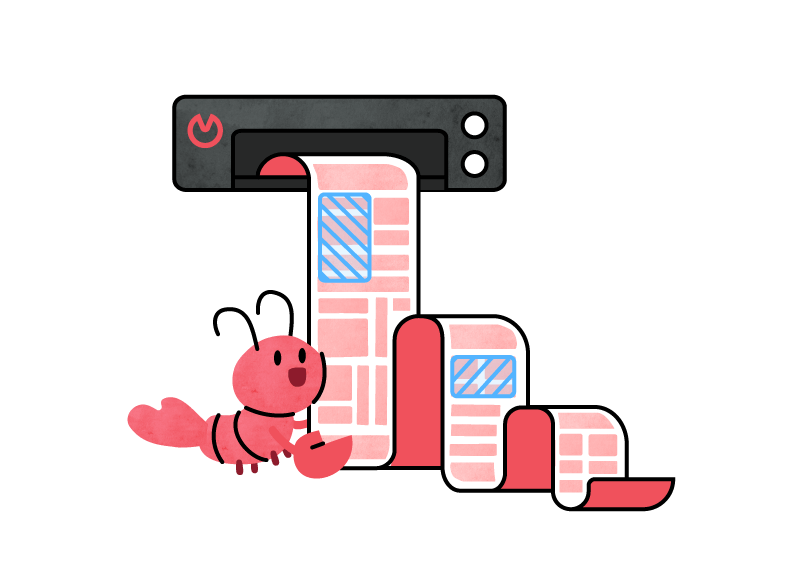3 common Hardships Project Managers Face at Remote Work
More people than ever before are working remotely. It's a great way to get to know the people you work with.
---
As a project management tool developer, We (@lobsta_works ) believe that everyone involves in remote work go through some sort of difficulties from minor ones to big ones.
The advantage of working remotely is that you don’t have to commute and you can set the pace of your work at your own discretion.
Thanks for this advantage, it’s very easy to adopt your own life style into your work style.
On the other hand, one of the most common disadvantages is the difficulty of communication due to the lack of face-to-face contact.
The conventional work style allows people to have natural flow of communication. Because communication is not just talking or texting, it’s also about reading ones subtle facial expressions to read between the lines.
When working remotely with a team, each person is required to devise a different way to take care of the team, which is different from working in an office. In particular, people who are in a position to manage projects, such as project managers, seem to have many difficulties.
In this article, I’ve picked up three of the most common problems with remote project management.
Hard to see what the others are doing.
This is one of the most common concerns I hear. In a remote team, each person is working from a different location, so you don’t know what the others are doing. Unless you actively communicate with each other, it might be difficult to keep track of each member’s work progress, which may be the biggest challenge of remote team work. However, it can be difficult to initiate a discussion without materials or tools that provide an overall view of the project as a basis for discussion.
In such cases, a task management tool that can show the team’s progress with a single glance is useful. In particular, a task management tool that has a Gantt chart function will allow you to see the progress of who is completing what tasks and to what extent in the entire team, as well as what needs to be done in order to complete the project.
With LOBSTA, you can use Gantt charts to get an overall view of the progress of your project. Visualizing whether a project is meeting its set deadlines and deadlines is what Gantt chart is specialized in.
Sharing the information with the team makes it easier to progress the project.
Decentralized communication vs Assuring quality
I’m sure many project managers have experienced this problem at least once. Especially in remote teams where people work from home, each person tends to introduce new tools suitable for their own work, which often makes it difficult to share the overall schedule and coordination. This not only results in inconsistent quality of reports from each member, but also makes it very difficult to manage.
In particular, it becomes even harder to standardize reports when there are members in the team who are working remotely but also doing “field work” such as on-site work or outside sales. The person making the report may not always be able to open a laptop and make a quick report from anywhere and anytime.
With LOBSTA, you can post the task from your own smartphone with location information attached, and also check outside the office.
Members who work in the field can upload location-based reports (tickets) on their smartphones, and project managers can manage them centrally on their desktops, making work transparent. Of course, you can also check the entire project on your phone, so if you need to check something over the weekend, you can easily do so.
“LOBSTA links location information to tasks, so I can check things remotely from home on the weekend that I would otherwise have to check paper drawings for. (Hyakumori Ltd. )
In this way, we can share information anytime and anywhere without compromising the quality of management, even if the team members work in different locations or at different sites.
Remote work made it hard to access physical paper documents stored in the office
Nowadays, remote work is not only happening in IT field due to the pandemic, and some non-tech savvy industries are having hard time digitalizing their workflow. For example, Construction and infrastructure works that include field work use paper based map, and now they are questioning how to handle maps and drawings digitally. Their dilemma is that they do see the benefit of using digitalized map, but some construction workers need to work offline depends on the site. So using paper based map is still useful.
The importance of digital transformation is discussed everywhere today, but digital transformation that ignores the needs of the actual work place and considers paper to be a total bad guy makes no sense.

LOBSTA specializes in digitally transforming paper-based tasks to meet the needs of the employees, and its extensive suite of plug-ins includes print plug-ins for all formats and optional report customization.
Having troubles managing the Project?
What did you think about the article? Did you resonate to some of them or you have completely different struggles? Please let us know what you think! Also, if you are looking for a better way to organize your project, feel free to talk to us through contact form !
We are offering a free beta demo at the moment for a limited offer. Why don’t you try LOBSTA out, and see if it fits your style?